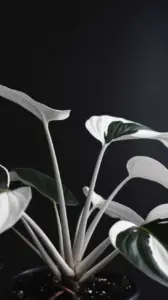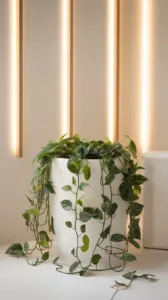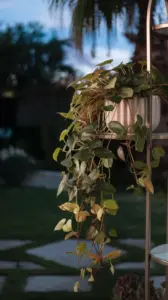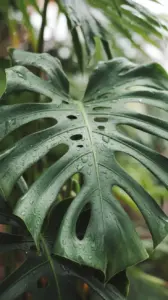Biological Features of Tradescantia Nanouk
Tradescantia Nanouk boasts unique biological characteristics that make it a favorite among houseplant enthusiasts. This plant is recognized for its beautifully variegated leaves, typically exhibiting a mix of green, white, and pink hues. The leaves are ovate and can grow up to 4 inches long. Notably, the plant can reach a height of 12 to 18 inches when properly cared for.
Growth Habits
As a perennial plant, Tradescantia Nanouk thrives in the right conditions. It prefers bright, indirect sunlight, which enhances its vibrant colors. Additionally, this species can tolerate low light, though color may diminish. Tradescantia Nanouk develops a sprawling growth habit, making it suitable for hanging baskets or as a ground cover.
Water and Soil Requirements
When it comes to watering, this plant prefers a well-draining potting mix. Allow the soil to dry out between waterings, ensuring not to overwater. Overwatering can lead to root rot, a common issue with Tradescantia plants. Therefore, monitoring soil moisture is crucial.
Table of Key Features
| Feature | Description |
|---|---|
| Leaf Color | Variegated green, white, and pink |
| Height | 12 to 18 inches |
| Growth Habit | Sprawling |
| Watering | Allow soil to dry out |
| Light Requirements | Bright, indirect sunlight preferred |
In summary, understanding the biological features of Tradescantia Nanouk can enhance its cultivation. Recognizing its light, watering, and soil needs ensures vibrant growth and health.
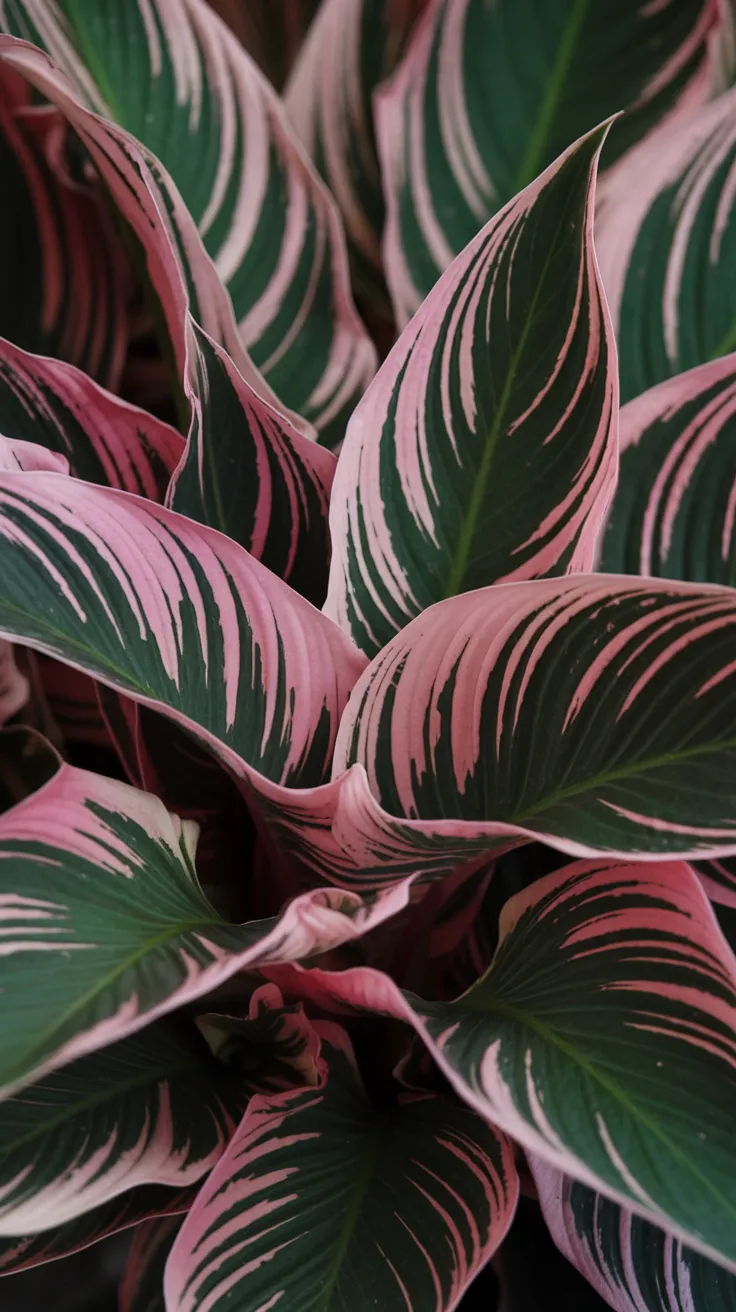
History and Cultural Significance
Tradescantia Nanouk features a rich history intertwined with various cultures. This vibrant plant, known for its striking variegated leaves, captivates many plant enthusiasts. The plant is a hybrid, created from the crossing of two Tradescantia species, which explains its unique appearance. It originated from the horticultural trends focused on developing colorful, low-maintenance houseplants.
Its cultural significance varies around the globe
In several regions, this plant symbolizes resilience and adaptability. Homeowners often choose Tradescantia Nanouk for its ability to thrive in diverse conditions. Not only does it beautify their spaces, but it also represents joy and harmony. Furthermore, the plant is popular in the world of interior design for its colorful leaves, which enhance living spaces.
- Popularity in Homes: Many people adore it for its low maintenance requirements.
- Symbolism: Represents balance and tranquility in various cultures.
- Environmental Impact: Helps to improve indoor air quality.
- Gardening Trend: Reflects the growing trend of incorporating plants into home decor.
With its cheerful colors and easy-going nature, Tradescantia Nanouk continues to draw attention. This plant frequently appears in social media posts, reflecting its rising popularity. Additionally, it often serves as a conversation starter among plant lovers. Due to its appealing aesthetics and care simplicity, many individuals view it as an ideal choice.
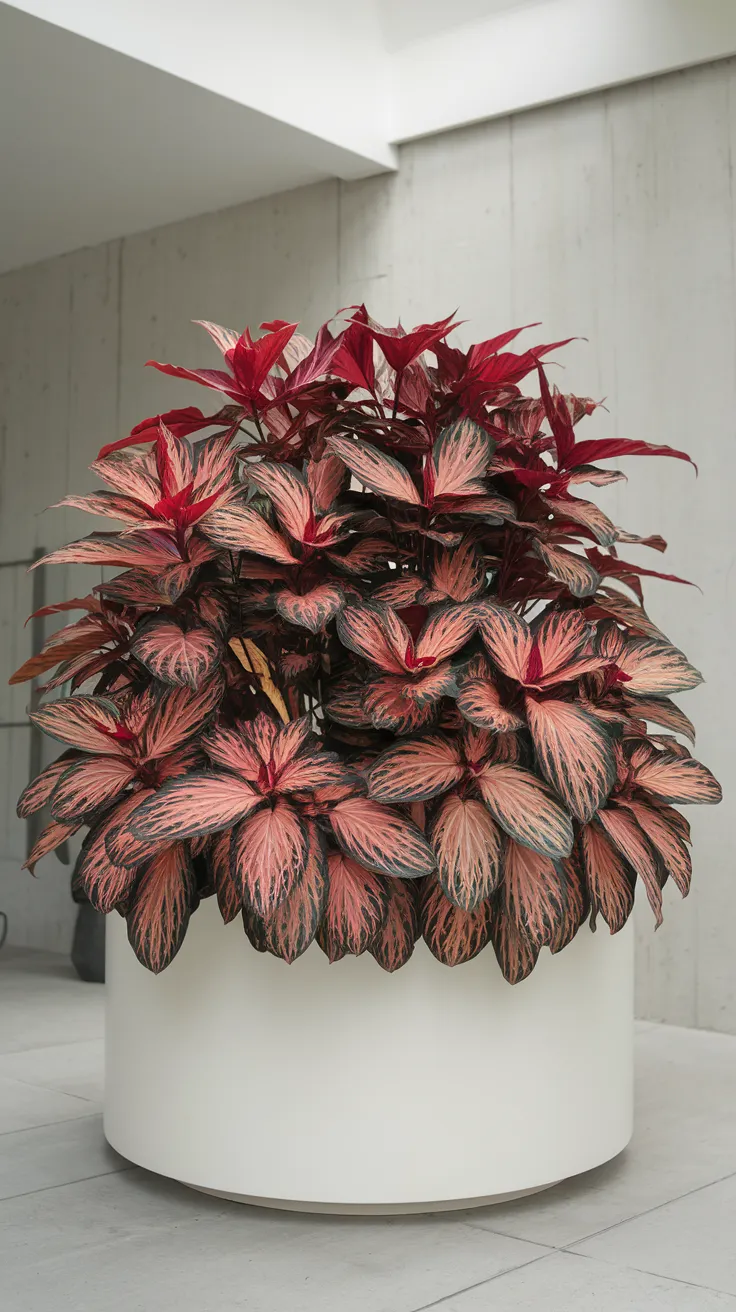
Ideal Growing Conditions for Tradescantia Nanouk
Tradescantia Nanouk thrives when provided with specific conditions. It prefers bright, indirect light, which promotes vibrant coloration. Too much sunlight can scorch the leaves. Consequently, the plant does best near a window where it can receive filtered light.
The soil should be well-draining and rich in organic matter. A potting mix designed for houseplants often provides excellent results. Additionally, it’s crucial to ensure proper water drainage to prevent root rot. Keep the soil consistently moist but avoid overwatering. During growth periods, increasing humidity around the plant can help enhance its health and appearance.
Temperature also plays a vital role in maintaining the health of your Tradescantia Nanouk. Ideally, the temperature should range between 65°F to 75°F (18°C to 24°C) during the day, and slightly cooler at night. Protect it from drafts, which can lead to stress.
Fertilizing your Tradescantia Nanouk is best done during the growing season. Use a balanced, water-soluble fertilizer every 4 to 6 weeks. This will support robust growth and vibrant foliage. Remember to dilute the fertilizer to half the recommended strength to avoid burning the roots.
Here’s a quick overview of the ideal growing conditions:
| Condition | Ideal Level |
|---|---|
| Light | Bright, indirect light |
| Soil | Well-draining, rich in organic matter |
| Temperature | 65°F to 75°F (18°C to 24°C) |
| Humidity | Moderate to high humidity |
| Fertilizer | Balanced, diluted water-soluble fertilizer |
In summary, ensuring the right balance of light, water, temperature, and nutrients allows Tradescantia Nanouk to flourish. By carefully managing these factors, you can enjoy the stunning beauty of this plant in your home.
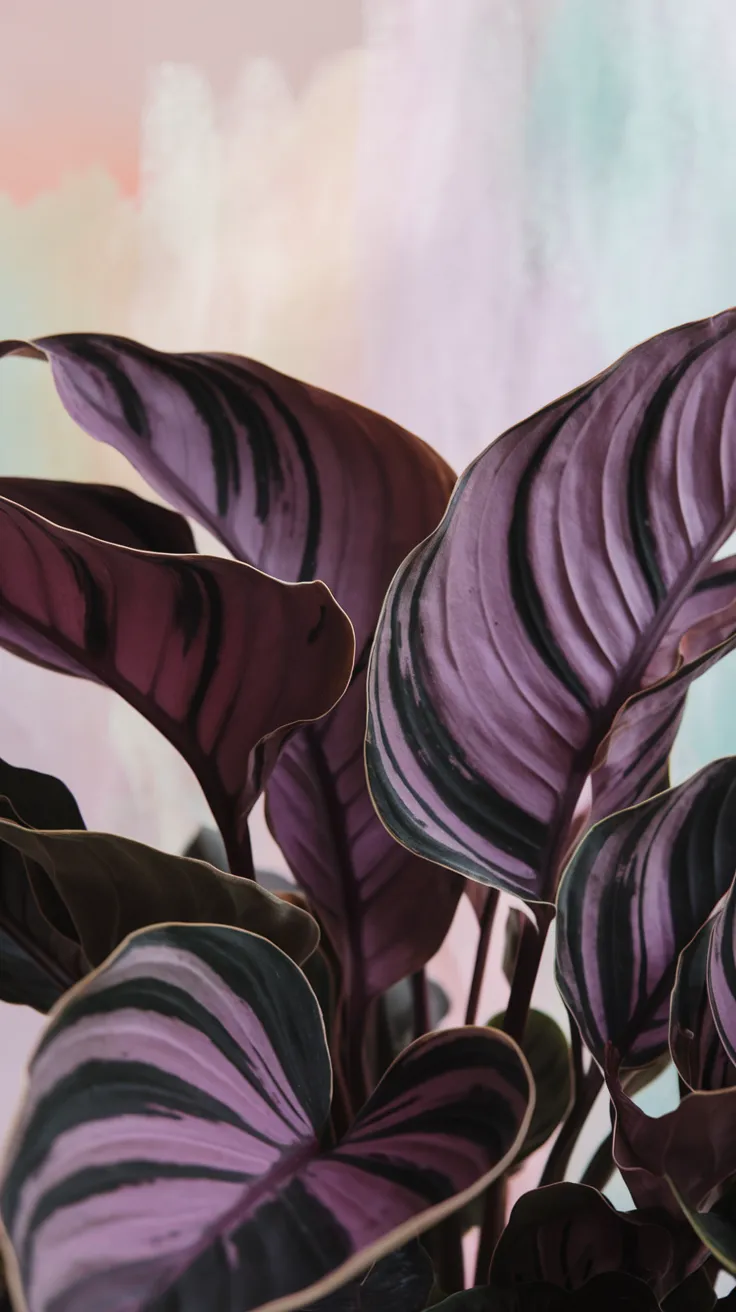
Tradescantia Nanouk Care and Maintenance
Caring for your Tradescantia Nanouk ensures its vibrant colors and healthy growth. This plant thrives in bright, indirect light. However, it can also adapt to lower light conditions. Overexposure to direct sunlight can scorch its leaves, so always provide some shade. Watering is essential to keep the plant lush. Allow the top inch of soil to dry between watering sessions. When you notice the leaves drooping, it’s a sign that the plant needs more water.
Humidity and Temperature Needs
Tradescantia Nanouk enjoys high humidity levels, ideally between 50-70%. You can increase humidity by misting the leaves regularly or using a humidifier. Avoid placing the plant near drafty windows or air conditioning vents. The ideal temperature range is between 65°F to 80°F.
Fertilization Recommendations
During the growing season, fertilize your Tradescantia Nanouk every two weeks. A balanced liquid fertilizer works well. Reduce feeding in fall and winter when the plant’s growth slows down. Always follow packet instructions to avoid over-fertilizing, which can harm the plant.
Pruning and Propagation Tips
Regular pruning keeps your Tradescantia Nanouk bushy and encourages new growth. Trim back any leggy stems to promote bushier growth. For propagation, take cuttings from healthy stems. Place them in water or directly into the soil. They root quickly and can become new plants.
Pest and Disease Management
Watch for common pests like spider mites and mealybugs. Treat infestations promptly using insecticidal soap or neem oil. Additionally, ensure good air circulation around the plant to prevent fungal issues. If you see any yellowing leaves, check for overwatering, which can lead to root rot.
General Tips for Thriving Tradescantia Nanouk
- Rotate the plant occasionally to ensure even growth.
- Keep leaves clean by wiping them with a damp cloth.
- Avoid touching wet leaves; it may encourage disease.
- Repot every couple of years to refresh the soil.
By following these care tips, your Tradescantia Nanouk will thrive and bring vibrant colors to your space.
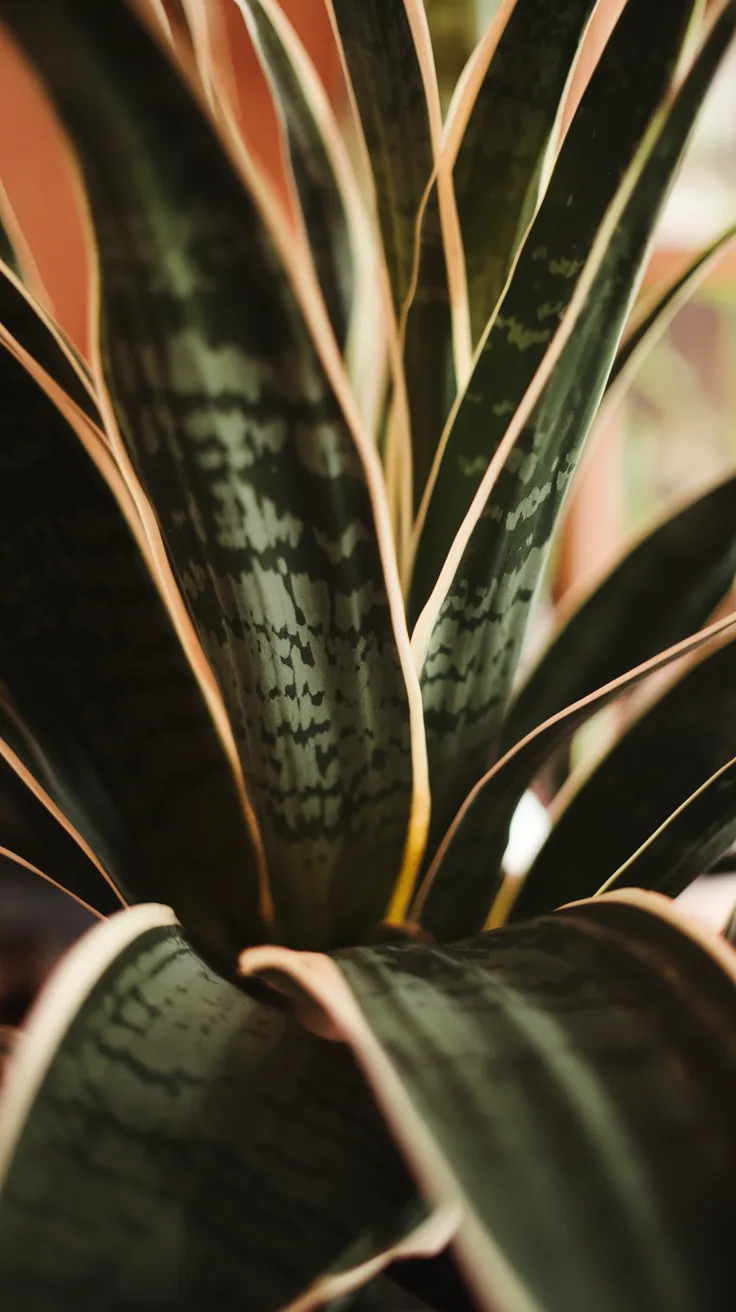
Propagation Techniques for Tradescantia Nanouk
Tradescantia Nanouk is an easy-to-propagate plant. By using simple techniques, you can expand your plant collection. This vibrant houseplant thrives in appropriate environments and allows for multiple methods of propagation.
Stem Cuttings
The most popular way to propagate Tradescantia Nanouk is through stem cuttings. First, select a healthy stem with a few leaves. Cut the stem just below a node, ensuring the cutting is at least 3-4 inches long. After preparing the cutting, remove the lower leaves to avoid decay in water or soil.
Next, you have two options for rooting your cuttings: water or soil. If you choose water, place the cutting in a glass of water, ensuring that the node is submerged. Change the water every few days to keep it fresh. Within a couple of weeks, you should see roots developing. Once the roots are approximately 2-3 inches long, transfer the cutting to soil.
For soil propagation, you can directly plant the cutting in a pot filled with potting mix. Lightly water the soil to settle it around the cutting. Be sure to keep the soil moist but not soggy. Ideally, place the pot in bright, indirect light to encourage growth.
Division Method
Another effective way to propagate Tradescantia Nanouk is division. This method works best with established plants. Start by gently removing the plant from its pot. Carefully separate the root ball into smaller sections, ensuring each section has healthy roots and foliage. Replant these sections in their respective pots with fresh soil and water them thoroughly.
Regardless of the propagation method chosen, maintaining proper moisture levels is crucial. Consequently, monitor the cuttings or divisions closely, adjusting care as needed to ensure healthy growth. With time and patience, you will enjoy multiple Tradescantia Nanouk plants flourishing in your home.
Common Problems and Solutions
Tradescantia Nanouk faces several common issues that affect its health and growth. Understanding these problems is essential for maintaining vibrant foliage.
One prevalent issue is leaf wilting. This often occurs due to inadequate watering practices. If the soil is too dry, the leaves will droop. Conversely, excessive watering can lead to root rot, a severe risk for Tradescantia Nanouk. Regular checks on the soil moisture will help you maintain the right balance.
Pests can also pose a significant threat to your plant. Spider mites and aphids are common culprits. They suck the nutrients from the leaves, leading to yellowing and droppage. Therefore, inspect your plant frequently for these pests. If you notice any, treat your plant promptly with insecticidal soap or neem oil.
Another concern is the loss of color vibrancy in the leaves. This usually happens due to insufficient light. Tradescantia Nanouk thrives in bright, indirect sunlight. If you notice faded colors, consider relocating your plant to a better-lit area.
Finally, achieving optimal humidity is crucial. Tradescantia Nanouk enjoys humidity levels between 40% to 60%. In dry environments, leaves can develop brown tips. To counteract this, mist your plant or place a humidifier nearby.
Here is a summary of common problems and their solutions:
- Leaf Wilting: Ensure proper watering practices.
- Pest Infestation: Regularly check for pests and apply treatments as necessary.
- Lack of Color: Provide bright, indirect sunlight.
- Brown Leaf Tips: Maintain humidity levels.
| Problem | Symptoms | Solution |
|---|---|---|
| Leaf Wilting | Drooping leaves | Adjust watering schedule |
| Pest Infestation | Yellowing leaves | Use insecticidal soap |
| Lack of Color | Faded leaf hues | Increase light exposure |
| Brown Leaf Tips | Crisp leaf edges | Boost humidity levels |
Seasonal Care Adjustments
Tradescantia Nanouk thrives with tailored seasonal care. Thus, adjusting your approach according to the season is essential for optimal growth. Here are key adjustments to consider:
- Spring: As new growth emerges, increase watering gradually. Fertilize every four weeks using a balanced fertilizer.
- Summer: Higher temperatures mean more water. Ensure the soil remains moist but not soggy. A little extra humidity benefits this plant.
- Fall: Start reducing water as temperatures drop. Transition to fertilizing every six weeks to support health.
- Winter: Cut back on watering significantly. This plant can go dormant, so adjust the location if possible to receive more light.
By implementing these seasonal care adjustments, you’ll ensure the vitality of your Tradescantia Nanouk throughout the year.
Microclimate Setup Tips
Creating the ideal microclimate for your Tradescantia Nanouk can significantly enhance its growth and vitality. This plant prefers a warm, humid environment, closely mimicking its native tropical habitat. To achieve this, you should consider several key factors.
Light
Tradescantia Nanouk thrives in bright, indirect sunlight. Place it near a window where it receives filtered light. However, avoid direct sunlight, as it can scorch the leaves.
Temperature
Maintain a temperature range between 65°F and 75°F (18°C to 24°C). Be cautious of sudden temperature fluctuations, as these can stress the plant.
Humidity
This plant enjoys high humidity. If your home is dry, consider using a humidifier. Alternatively, regularly misting the leaves can help maintain humidity levels.
Soil Requirements
Use a well-draining potting mix. Tradescantia Nanouk grows best in a mix designed for tropical plants or a combination of potting soil and perlite.
Watering
Allow the top inch of the soil to dry out between watering. Overwatering can lead to root rot, while underwatering may cause the leaves to curl.
Fertilization
During the growing season, apply a balanced liquid fertilizer every four to six weeks. Reduce feeding in fall and winter when the plant’s growth slows.
- Keep it in bright, indirect light.
- Maintain humidity above 50%.
- Water when the top inch of soil is dry.
- Use a well-draining potting mix.
- Fertilize during the growing season.
By following these microclimate setup tips, your Tradescantia Nanouk will flourish and display its beautiful, variegated leaves.
Frequently Asked Questions about Tradescantia Nanouk
Many plant enthusiasts have common inquiries about Tradescantia Nanouk. First, how often should you water this plant? Ideally, water your Tradescantia Nanouk when the top inch of soil feels dry. This ensures the roots don’t sit in soggy soil, which can lead to rot. Another frequent question involves light requirements. This plant thrives in bright, indirect sunlight. However, it can tolerate lower light levels, yet growth may slow down.
Additionally, many wonder about the best temperature for Tradescantia Nanouk. It prefers temperatures ranging from 65°F to 80°F (18°C to 27°C). Consequently, avoid exposing it to drafts or sudden temperature changes. Another important aspect is feeding. During the growing season, it benefits from a balanced, diluted fertilizer every month.
Lastly, how can you propagate Tradescantia Nanouk? Simply take cuttings from an existing plant. Place these cuttings in water or soil. Within a few weeks, roots will develop, and new plants can thrive. This makes propagation an exciting part of caring for this plant!
Summary and Recommendations
Tradescantia Nanouk is a popular choice for indoor plants. Its striking variegated leaves enhance any space with unique colors. This plant thrives in bright, indirect light, making it an ideal option for homes and offices.
To care for your Tradescantia Nanouk, maintain a consistent watering schedule. Water the soil when the top inch feels dry. Overwatering can cause root rot, so ensure proper drainage.
Additionally, regular pruning promotes bushier growth and keeps the plant looking neat. Fertilize monthly during the growing season for the best results. Overall, this plant is low maintenance and adds beauty to your surroundings.


